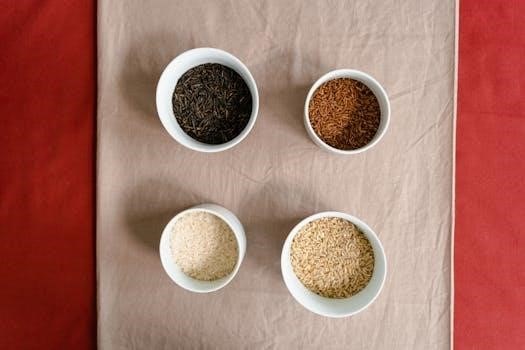The Blood Type O diet suggests a specific eating pattern based on your blood type. This approach claims that aligning your diet with your blood type can improve health and well-being.
Overview of the Blood Type Diet Theory
The Blood Type Diet, popularized by Dr. Peter D’Adamo, posits that your blood type (O, A, B, AB) determines which foods are beneficial or harmful to your health. This theory suggests that individuals with different blood types process foods differently due to unique antigens and reactions with lectins found in various foods.
According to this diet, certain foods can cause adverse reactions, such as inflammation or digestive issues, if they are not compatible with your blood type. The diet proposes that following a blood type-specific eating plan can optimize digestion, boost energy levels, prevent disease, and even aid in weight management.
However, it is important to note that the scientific community largely disputes the claims of the Blood Type Diet due to a lack of robust scientific evidence supporting its efficacy. Despite this, many individuals still find anecdotal benefits from following the diet’s guidelines.
The Core Principles for Blood Type O
The Blood Type O diet centers around the idea that individuals with type O blood thrive on a diet rich in protein, similar to their hunter-gatherer ancestors. The core principle emphasizes consuming lean meats, poultry, and fish as primary sources of nutrition. This diet promotes efficient digestion and metabolism for type Os.
Another key aspect involves limiting grains, legumes, and dairy products, as these are believed to be more difficult for type O individuals to digest. Vegetables and fruits are encouraged, but certain varieties should be consumed in moderation. Regular physical activity, particularly intense exercise, is also considered essential for maintaining optimal health on this diet.
Furthermore, stress management is highlighted as a crucial component, given the tendency of type O individuals to experience higher stress levels. By adhering to these principles, the Blood Type O diet aims to enhance energy, promote weight loss, and improve overall well-being.

Foods Recommended for Blood Type O
For Blood Type O, prioritize lean meats, fish, and certain vegetables. These foods are believed to optimize digestion and energy levels, aligning with ancestral dietary patterns for this blood type.
Beneficial Meats and Proteins for Type O
Type O individuals are often encouraged to consume a diet rich in animal proteins, reflecting what proponents believe was the historical diet of early humans with this blood type. Beef, lamb, and venison are frequently cited as beneficial choices. These lean meats provide essential amino acids and nutrients that support overall health.
However, it’s important to select high-quality, grass-fed options whenever possible to minimize exposure to hormones and antibiotics. Poultry, such as chicken and turkey, can also be included, though some variations of the diet suggest limiting their intake compared to red meats.
Eggs, a versatile protein source, are generally well-tolerated and can be incorporated into the diet. When choosing protein sources, prioritize lean options and prepare them in healthy ways, such as baking, grilling, or broiling, rather than frying. Balancing protein intake with other recommended foods is key.
Recommended Seafood Options for Type O
For individuals with blood type O, seafood is considered a highly beneficial component of their diet. The diet suggests that certain types of fish and shellfish are particularly well-suited to their digestive systems and overall health.
Cold-water fish like salmon, cod, halibut, and herring are frequently recommended due to their high omega-3 fatty acid content, which supports cardiovascular health and reduces inflammation. These fatty acids are essential for optimal bodily function and contribute to overall well-being.
Other suitable options include tuna, swordfish, and mackerel, which are rich in protein and other vital nutrients. Shellfish such as shrimp and mussels can also be included in moderation. It’s crucial to choose fresh, sustainably sourced seafood whenever possible and prepare it in healthy ways, such as steaming, baking, or grilling, to maximize its nutritional benefits.
Vegetables and Fruits Suitable for Type O
For individuals following the Blood Type O diet, incorporating specific vegetables and fruits is crucial for optimal health. The diet suggests that certain produce items are particularly beneficial due to their compatibility with the digestive system of those with type O blood.
Leafy greens such as spinach, kale, and broccoli are highly recommended, as they are rich in vitamins, minerals, and antioxidants. These nutrients support overall well-being and help combat inflammation. Additionally, vegetables like onions, garlic, and peppers are encouraged for their immune-boosting properties.
When it comes to fruits, berries, plums, and figs are often favored. These fruits are easily digestible and provide essential vitamins and fiber. However, it’s advisable to limit consumption of certain fruits like oranges and tangerines, as they may cause digestive upset in some individuals with blood type O. Choosing organic and locally sourced produce whenever possible can further enhance the benefits.

Foods to Avoid or Limit for Blood Type O
Following the Blood Type O diet means restricting certain foods. These restrictions are based on the theory that some foods are less compatible with Type O blood.
Grains and Legumes to Restrict for Type O
For individuals with Type O blood, the Blood Type Diet suggests limiting the consumption of certain grains and legumes. This recommendation stems from the belief that these foods can interfere with the digestive processes and metabolic efficiency of those with Type O blood.
Specifically, grains like wheat, corn, and certain types of oats are often cited as problematic. These grains are thought to be difficult for Type O individuals to digest, potentially leading to weight gain or other health issues. Similarly, certain legumes, such as lentils and kidney beans, are also often restricted. These legumes are believed to inhibit the function of insulin and slow down metabolism.
The reasoning behind these restrictions is rooted in the evolutionary history associated with Type O blood, suggesting that individuals with this blood type are better adapted to a diet higher in protein and lower in grains and legumes.
Dairy Products and Their Impact on Type O
The Blood Type O diet often advises individuals with Type O blood to limit their consumption of dairy products. This recommendation is based on the theory that Type O individuals may have difficulty digesting dairy due to their digestive system being more adapted to a diet based on meat and vegetables.
Dairy products like milk, cheese, and yogurt are believed to cause digestive issues and inflammation in some Type O individuals. The diet suggests that the proteins in dairy can be hard for Type O’s to break down, potentially leading to discomfort or other health problems.
However, it’s important to note that some Type O individuals may tolerate certain dairy products better than others. Fermented dairy like kefir or certain cheeses might be easier to digest for some. Listening to your body and observing how different dairy products affect you is crucial when considering this aspect of the diet.

Considerations and Scientific Evidence
It’s important to approach the Blood Type O diet with careful consideration. Scientific evidence supporting its claims is limited, so consult healthcare professionals before making significant dietary changes for health and well-being.
Lack of Scientific Support for the Blood Type Diet
The Blood Type Diet, including the Blood Type O variant, lacks robust scientific validation. Numerous studies have challenged its core principles, finding no significant correlation between blood type and the purported benefits of specific diets. Research consistently fails to demonstrate that adhering to a blood type-based diet leads to improved health outcomes compared to standard dietary recommendations.
Critics highlight that the diet’s claims are often based on anecdotal evidence rather than rigorous scientific investigation. The supposed mechanisms by which blood types influence nutrient absorption and metabolism remain largely unsubstantiated. While some individuals may experience positive effects from following the diet, these are more likely attributable to factors such as increased awareness of food choices and overall calorie reduction, rather than any inherent compatibility with their blood type. Therefore, relying solely on the Blood Type Diet for nutritional guidance is not advisable.
Potential Benefits and Risks of Following the Diet
While the Blood Type O diet lacks definitive scientific backing, some individuals might experience perceived benefits. These could stem from increased consumption of lean proteins and vegetables, common recommendations for Type O individuals. This dietary shift might lead to weight loss and improved energy levels for some. However, potential risks also exist.
Restricting entire food groups, such as grains and dairy, without proper nutritional guidance could lead to deficiencies in essential nutrients like calcium and fiber. Furthermore, adhering strictly to the diet might prove socially challenging and unsustainable long-term. It’s crucial to consult with a healthcare professional or registered dietitian before adopting the Blood Type O diet to ensure nutritional adequacy and avoid potential health complications. Individual responses to the diet can vary considerably.

Creating a Blood Type O Diet Food List PDF
Creating a Blood Type O diet food list PDF can be a helpful tool. It allows for easy reference, aiding in meal planning and grocery shopping according to the diet’s guidelines.
Key Food Categories for Your PDF Guide
When constructing your Blood Type O diet food list PDF, organizing by key food categories will enhance its usability. Start with proteins, specifically lean meats like beef and lamb, which are considered beneficial for Type O individuals. Then, incorporate a section for seafood, highlighting recommended options.
Next, dedicate a section to vegetables and fruits, listing those that are suitable for Type O. Follow this with grains and legumes, noting which should be restricted or avoided. Include a section on dairy products, outlining their potential impact on Type O.
Furthermore, consider adding sections for oils, nuts, and seeds, specifying those that are beneficial. Don’t forget a section for beverages, indicating suitable and unsuitable drinks. Organizing your PDF in this way ensures that users can quickly find the information they need, making meal planning easier and more effective for those following the Blood Type O diet.
Structuring Your PDF for Easy Reference
To maximize the usability of your Blood Type O diet food list PDF, prioritize clear and concise structuring. Begin with a detailed table of contents, allowing users to quickly navigate to specific food categories. Use headings and subheadings to break down information into manageable sections. Employ bullet points or numbered lists to present food recommendations and restrictions clearly.
Consider using a color-coded system to visually distinguish between beneficial, neutral, and foods to avoid. Include a brief explanation of the Blood Type O diet theory and its core principles at the beginning of the PDF. Add a section addressing frequently asked questions to provide additional guidance.
Ensure that the font is legible and the layout is clean and uncluttered. Incorporate a disclaimer stating that the information is for informational purposes only and not a substitute for professional medical advice. By following these structuring tips, you can create a PDF that is easy to reference and helps users effectively implement the Blood Type O diet.

